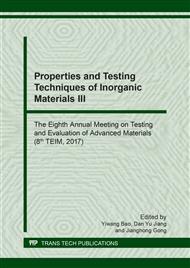p.286
p.293
p.306
p.314
p.320
p.326
p.331
p.336
p.341
Study on the Damage Risk of Dam Concrete Suffering Alkali-Silicareaction Based on 7 Years Outdoor Field Exposure Testing, Part I: The Influence of Maximum Size of Aggregate
Abstract:
Alkali-aggregate reaction is one of the most serious concrete durability problems threating the safety of dam. Some accelerated test methods with high temperature and high alkalinity are usually used in laboratory to evaluate the reactivity of aggregates or the effectiveness of suppression measures. In this paper, an outdoor field exposure station was built to objectively assess the damage risk of real dam concrete suffering alkali-silica reaction. 25 concrete blocks measuring 450 by 450 by 450 mm in size were tested at first stage, all immersed into water to simulate the environment of dam concrete. The influences of the size of aggregate and the amount of cementing materials were tested at the same time. After 7 years field exposure testing, the results showed that: the crack risk of blocks was not proportional to the expansion rates, but influenced by the maximum diameter of aggregate. The block with bigger aggregate had smaller expansion rate, but cracked more easily. If the sizes of aggregate were the same, less cementing materials would cause bigger expansion. The constraint effect is bigger than the effect of alkali content increasing caused by increasing the amount of cementing materials.
Info:
Periodical:
Pages:
341-346
Citation:
Online since:
April 2018
Authors:
Price:
Сopyright:
© 2018 Trans Tech Publications Ltd. All Rights Reserved
Share:
Citation:


